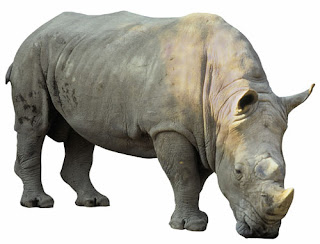
Conservation Challenges
For years, rhinos have been widely slaughtered for their horn, a prized ingredient in traditional Asian medicines. Destruction of their habitat over the years, has brought the rhinos to the brink of extinction. These animals are among the worlds' most endangered species. The great one-horned rhino could once be found from Pakistan all the way through India, Nepal, Bangladesh, Bhutan and Myanmar. By the turn of the century, this species had vanished from much of its range, and today only about 2500 survive in India and Nepal. Throughout their range, their habitat continues to dwindle fast due to conversion of grassland habitats into agricultural fields and other human pressures. The threat of poaching continues to be ever-present.
WWF-India's Involvement
Conserving the rhinos and their habitat is imperative. WWF has been working on rhino conservation for over four decades. The big programme initiated by WWF is the Indian Rhino Vision 2020 (IRV 2020). The vision of the programme is to increase the total rhino population in Assam to about 3000 by the year 2020 and just as significantly ensure that these rhinos are distributed over at least seven protected areas to provide long-term viability of an Assam metapopulation of the species. This will be achieved by translocating the rhinos from two-source populations (Kaziranga and Pobitara) into 3 or 4 target Protected Areas (Manas, Laokhowa, Burachapori, Kochpora, Dibrusaikhowa and, possibly, Orang).
Other Challenges
The Forest Department faces a major challenge as lack of equipment, finance, political will and shortage of staff makes it difficult to implement conservation work at the grassroot level. Two serious on the ground problems include, containing poaching and loss of habitat to encrochments.

No comments:
Post a Comment